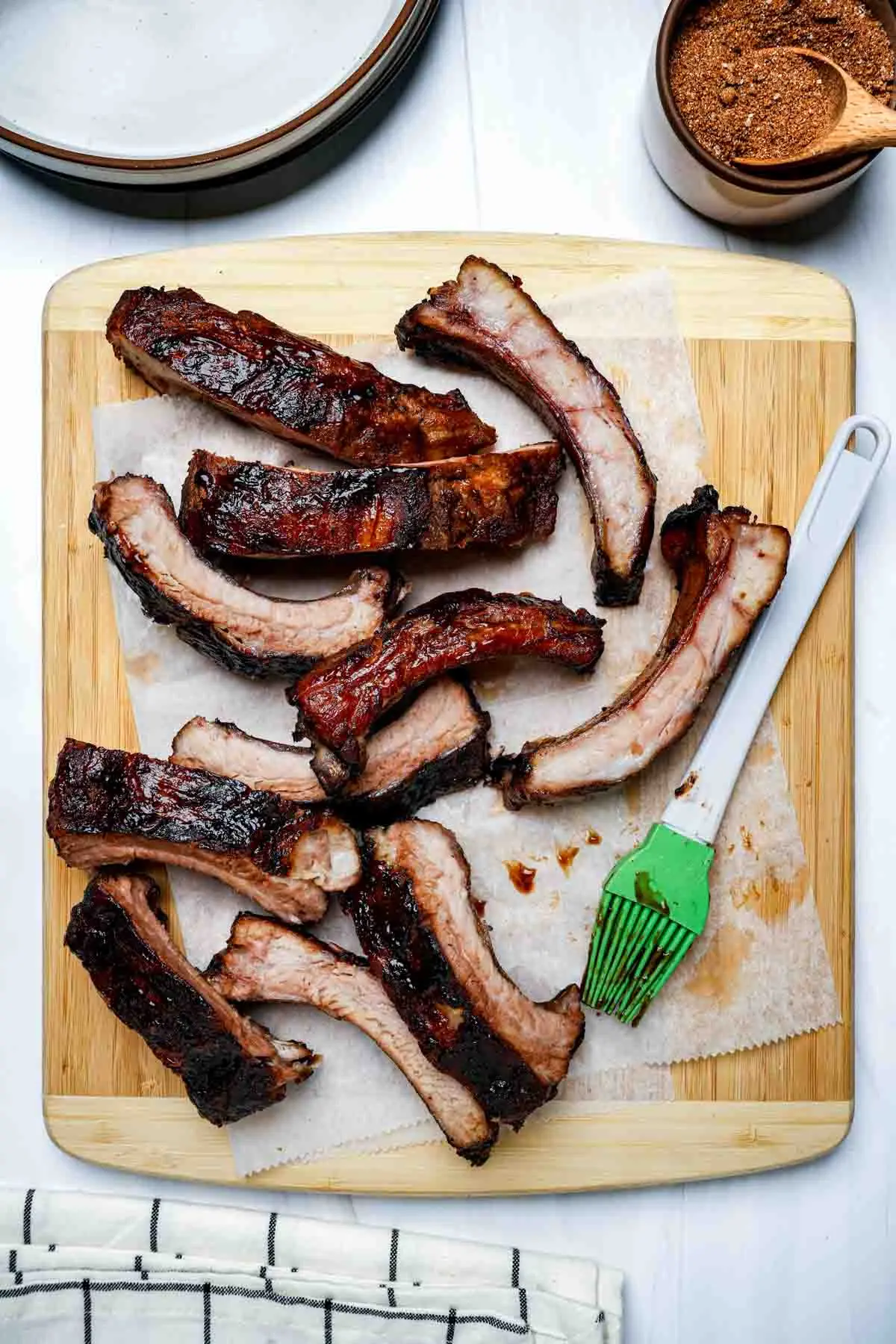If you're a fan of smoky, tender, and delicious barbecue ribs, but struggle to achieve consistent results, then sous vide may be the solution you've been looking for. With precise temperature control and extended cooking times, sous vide can help you achieve that perfect texture and flavor every time. In this guide, we'll explore the process of cooking smoked ribs sous vide and how to optimize the results for a mouthwatering barbecue experience.

Characteristics of a Perfect Rib
Before we dive into the sous vide process, let's take a moment to understand what makes a perfect rib. When you cook ribs in a smoker, several things happen. First, the slow and gentle heat breaks down the tough connective tissue, making the ribs tender. Second, the exterior of the ribs develops a crisp bark through the Maillard reaction. Third, the meat absorbs smoky flavors from the wood and coal, resulting in a rich and flavorful profile. Lastly, the ribs develop a pink smoke ring just below the surface, adding visual appeal.
Getting a Tender, Meaty Interior Using Sous Vide
In order to achieve a tender and meaty texture with sous vide, the ribs need to be cooked at the right temperature and for the right amount of time. Through extensive testing, temperatures ranging from 145°F to 165°F have been found to be the sweet spot. At 145°F for 36 hours, the ribs retain plenty of moisture while still being tender. At 165°F for 12 hours, the ribs have a more traditional barbecue texture, with meat that pulls off the bone and melts in your mouth. Experimenting with temperatures and timings within this range can yield different textures and flavors.
For Extra-Juicy Sous Vide Pork Ribs, Turn to Salt!
Adding salt to the ribs before cooking can have a profound effect on both the texture and flavor. Salt helps the meat retain moisture, resulting in juicy ribs. It is recommended to salt the ribs a day in advance and let them rest in the refrigerator overnight. This allows the salt to penetrate the meat and enhance the overall flavor. Additionally, adding a spice rub to the ribs in the sous vide bag can further enhance the taste, contrary to some recommendations that advise against it.
Creating Smoke Flavor without Actual Smoke
One of the challenges of cooking smoked ribs sous vide is achieving that smoky flavor without an actual smoker. Liquid smoke can be a viable solution. Liquid smoke is made by burning hardwood and condensing the resulting smoke into a liquid form. It contains the same smoky compounds found in traditional smoking methods and can be added directly to the sous vide bag to infuse the meat with smoky flavor. This eliminates the need for a smoker and allows you to cook the ribs indoors from start to finish.

Achieving Smoke Rings Using Sous Vide
The smoke ring, which is often associated with well-smoked ribs or brisket, is purely cosmetic and does not guarantee smoke flavor or proper cooking. However, if you want to replicate the barbecue experience as closely as possible, you can create a similar effect using pink curing salts, also known as sodium nitrite. By adding a small amount of sodium nitrite to the spice rub and letting the meat rest overnight, you can achieve a pink smoke ring without actual smoke. This adds visual appeal to the ribs and enhances the overall barbecue experience.
Smoked ribs sous vide offer a convenient and foolproof method for achieving tender, flavorful, and consistent results. By carefully controlling the temperature and cooking time, adding salt and spice rubs, and incorporating liquid smoke or pink curing salts, you can create a barbecue experience that rivals traditional smoking methods. So, fire up your precision cooker and get ready to enjoy smoky, succulent ribs that will impress your family and friends!
If you want to know other articles similar to Sous vide smoked ribs: the ultimate guide you can visit the Smoked category.


Related Articles